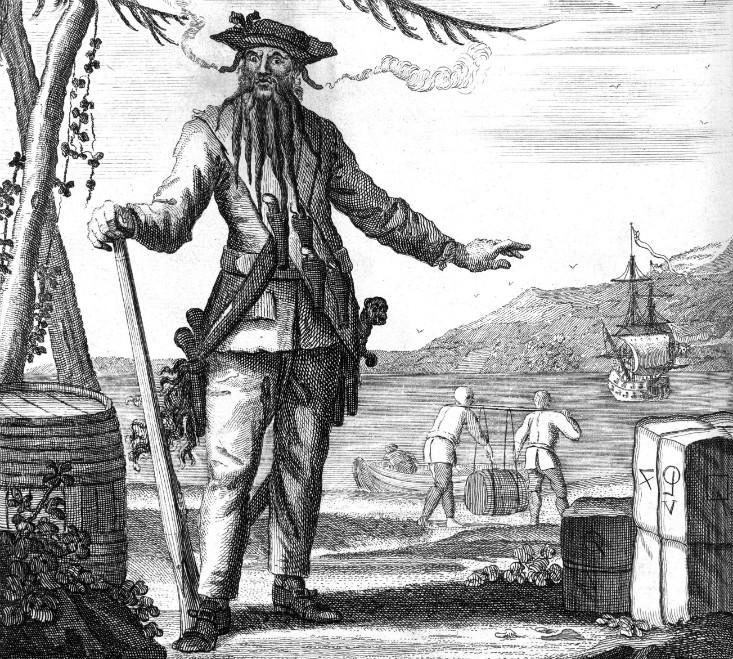
Good negotiators know that one of the trickiest aspects of their job is the timing of offers. As negotiations grind on, the costs of a stalemate rise on both sides. Yet if a settlement is reached too quickly, it is possible one side has left money on the table, giving in too easily, with the other side happy to accept. This is true whether talks are across a boardroom table, in a used-car lot, or in a pirate-hijacked ship floating in the Indian Ocean.
In mid-January there were confused reports about the possible hijacking of a merchant ship, the Marzooqah, by Somali pirates. It now looks as though the “pirate attack” was actually an operation by Eritrean forces, although no one seems to know why they boarded the ship.
Had the Marzooqah been the target of an attack, it would have been the first successful hijacking by Somali pirates since 2012, when approximately US$200 million was paid in ransom to Somali pirates. The following year saw a big drop in the number of pirate attacks off the coast of East Africa, a consequence of an international naval effort and the increased use of private, heavily armed security firms. Between 2004 and 2012, these interventions steadily reduced the pirates’ success rates and raised their operating costs.
Yet while the number of successful hijackings went down, the total income from piracy remained about the same. Pirates responded to the increase in their costs by bargaining harder and raising their returns on successfully hijacked ships.
In an effort to better understand these patterns, economists with the Economics of Security research initiative examined 179 hijackings from 2004 to 2012, drawing on interviews with “professional pirate negotiators” in the region. (Apparently the temptation of pirate talk was too powerful to resist: The title of their study is “Barrgh-gaining with Somali Pirates.”) The researchers found huge variations in ransom amounts and in the length of talks. Some ship-owners paid a couple hundred thousand dollars after a few weeks, while other negotiations dragged on for over a year and resulted in pay-outs of several million.
The amount of ransom paid and length of negotiations depended on a number of factors. Bigger, more modern ships fetched higher ransoms than smaller, older ships. Well-organized, “sophisticated” pirates, with the infrastructure to delay settlement while negotiations went on, were able to extract higher payouts than did opportunistic amateurs. As in any kind of business, existing market conditions proved very important. Pirates had a keen understanding of what the market would bear—the maximum amount of money recently offered for similar ships. They were also often privy to settlements won by rival gangs and were motivated to do just as well, if not better. (It seems that confidentiality provisions, if they were included, proved difficult to enforce.)
Relatively low ransoms were paid after both short and long negotiations, with the highest amounts paid after intermediate-length talks. Researchers attribute this pattern to information asymmetries. It can be difficult for pirates and ship-owners to get reliable information about one another. It is in the interest of ship-owners to appear too poor to afford a large pay-out. At the same time, pirates have an incentive to appear well-organized and patient enough to sit out a long haul—but not too long. Costs for both parties go up the longer negotiations continue. The ship’s value decreases as it sits in the water. Cargo deteriorates, supplies are consumed and barnacles grow on the hull. Pirates also end up spending more on fees to local militias, protecting the ship from rival gangs and law-enforcement agencies, feeding hostages after their supplies run out, diesel fuel needed to maintain the ship’s desalination equipment to jproduce drinking water, and even maintaining a supply of fresh khat, a stimulant drug that many pirates use.
While piracy has decreased in the waters around East Africa, it remains a problem the world over. The full annual economic cost of naval piracy globally is estimated to be about $1.5 billion. The International Maritime Bureau’s Live Piracy Map shows a number of attacks in progress. Better understanding the economics and incentives of piracy might help authorities make it a bad deal for would-be pirates.
Jeanette Bicknell, Ph. D., is the author of Why Music Moves Us (2009). She lives in Toronto, Canada.






























